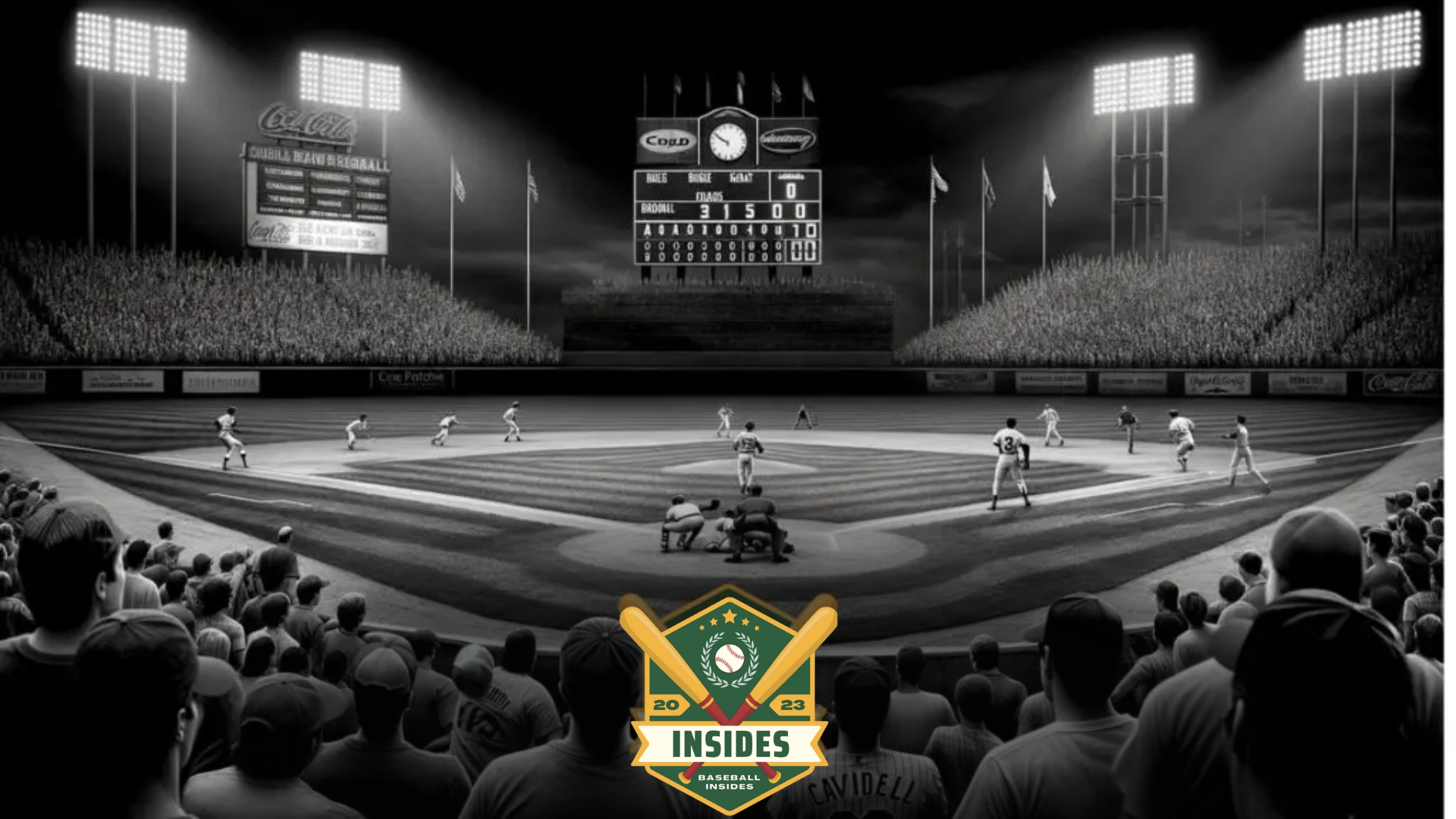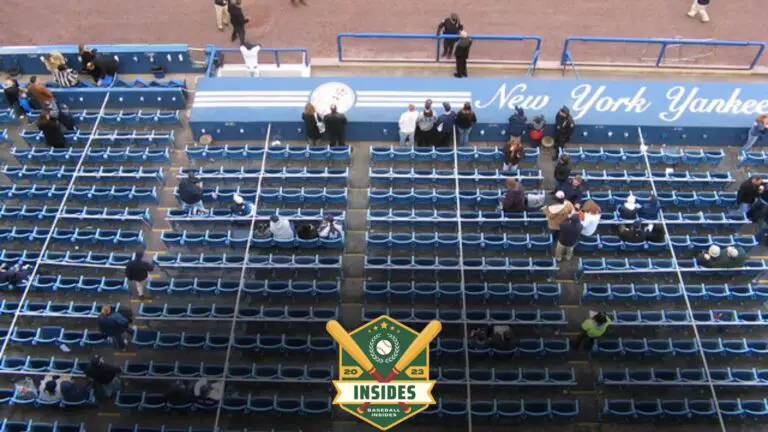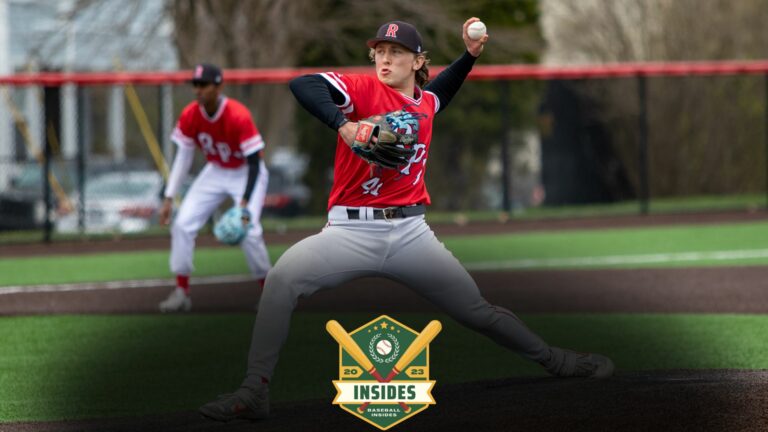
In this article:
If a baseball game is tied after the regulation nine innings, it proceeds into extra innings. Teams continue to play until one out-scores the other in a completed inning.
Baseball, America’s beloved pastime, thrills fans with its balance of strategic play and suspenseful moments. One such edge-of-the-seat scenario unfolds when the scoreboard reflects a tie at the end of the regular nine innings.
This is when the game extends into extra innings—the sport’s version of overtime.
Each team can bat in these additional innings, adhering to standard gameplay rules. The goal remains simple yet challenging: outscore the opponent in a completed inning to clinch victory.
The enthralling aspect of extra innings is the unpredictability, as games can swiftly conclude or become legendary marathons depending on the teams’ endurance and skill.
Whether a casual observer or a hardcore fan, the excitement of a tied game heading into extra innings never fails to increase the heartbeat of the baseball community.
The Extra Innings Rule
A regular nine-inning baseball game can end in a tie. What happens next? Fans witness the thrill of the “Extra Innings Rule”. This rule keeps the game fair and exciting. It ensures every game has a winner. Let’s dive into what makes extra innings so unique.
Starting With a Runner on Second
In extra innings, teams start with a twist. Each half-inning begins with a runner on second base. Major League Baseball introduced this rule to speed up the game.
It creates immediate scoring opportunities. This ups the ante for both teams from the very first pitch.
Strategy Shift in Extra Innings
With a runner in scoring position, strategies shift. Teams think differently. Bunting becomes more common. Every play counts more.
Managers must decide when to take risks. It’s a chess match between opposing dugouts. Fans stay on the edge of their seats, anticipating each move.
Suspended Games
In the thrilling world of baseball, not every game concludes as expected.
Suspended games are unique situations. These occur when a match cannot continue on the scheduled day.
Fans often wonder what rules govern these games and how they resume. Let’s dive into the specifics.
Criteria for a Suspended Game
Several factors can lead to a game suspension:
- Weather conditions that prevent safe play.
- Issues with lighting or field conditions.
- Technical difficulties, like faulty equipment.
- A tie that persists until a league-imposed curfew or beyond.
A game cannot simply stop and end in a tie. Specific criteria must be met before officials decide to suspend it.
Resuming Play on a Future Date
Once a game is suspended, it isn’t over. It must resume at a future date. Here’s what happens:
| Action | Description |
|---|---|
| Choosing a Date | The teams pick a new date, often the next possible day. |
| Starting Point | Play continues from where the game stopped, not from scratch. |
| Player Changes | Teams can change players except those removed from the game. |
These measures ensure the game’s integrity remains intact while providing a fair outcome for all involved parties.
Tie Games in History
Baseball, America’s beloved pastime, has seen countless thrilling games. But what about when the scoreboard shows equal runs for both teams?
Tie games are rare in baseball’s rich history. Yet, they have left an indelible mark on the sport.
Famous Tied Games
Famous tie games often become etched in the memory of fans. Some iconic tied games include:
- 2002 All-Star Game: Ended in a tie after 11 innings with both teams running out of pitchers.
- 1949 Allie Reynolds’ No-Hitter: A rare feat, the game concluded as a tie because of darkness.
The Role of Weather in Historic Ties
The weather can be a game-changer in baseball. Historic ties often owe their outcome to unpredictable weather conditions. Consider these instances:
| Year | Game | Weather Impact |
|---|---|---|
| 1912 | World Series Game 2 | It was called due to darkness, ending tied, and replayed the next day. |
| 1965 | Houston Astros vs. Cincinnati Reds | Rain caused the game to be stopped, resulting in a tie. |
Tiebreakers in the Playoffs
Excitement peaks when playoff baseball games end in a tie. The usual nine innings don’t crown a winner.
So, what’s next? “Tiebreakers in the Playoffs” take center stage, extending the drama and testing the limits of teams vying for the championship.
Extended Innings in Postseason
Extra innings are like free baseball for fans, but they’re more than just additional play. Teams battle until one side scores more runs, breaking the tie.
This could go on for many innings, making each pitch critical.
Impact on Player Performance and Strategy
Extra innings in a tie game bring a mix of nerves and tactics. Managers must strategize impeccably. Players are on high alert, ensuring top performance.
The stakes couldn’t be higher, with each decision potentially ending their season or keeping the dream alive. This pressure cooker tests resilience, conditioning, and mental toughness.
- Bullpen depth is crucial as pitchers tire.
- Batters face intense pressure with each at-bat.
- Fielding must be flawless to avoid costly errors.
Fan Experience During Tied Games
Tied baseball games whip fans into a frenzy of excitement and anxiety. The energy in the stadium shifts as every pitch and hit could tip the balance.
Engagement in Extra Innings
The thrill of the game intensifies as it enters extra innings. Fans are on the edge of their seats with every swing.
Cheers and groans ripple through the crowd, bonding strangers in their shared hope for victory.
- Scoreboards light up with stats and player info.
- Cameras capture anxious, hopeful faces.
- The mascot rallies everyone.
Promotions and Entertainment
Teams know the value of keeping spirits high during ties. They roll out promotional items or special entertainment. From t-shirt cannons to quirky on-field contests, they enhance the fan experience.
“Stay tuned for the 10th-inning stretch giveaway!” echoes across the PA system.
| Inning | Promotion Type |
|---|---|
| 10th | Free Caps |
| 11th | Discounted Concessions |
| 12th+ | Random Seat Prizes |
Rule Changes and Their Impact
Understanding baseball rule modifications is crucial for fans and players alike. These changes can significantly affect game strategy, player performance, and excitement.
Let’s dive into how recent and future rule adjustments are shaping the game in the event of a tie.
Recent Adjustments to Tie Rules
Baseball’s tiebreaker rules underwent significant changes recently. Extra innings now start with a runner on second base.
This change aims to resolve games faster and save pitchers from overuse.
- Automatic runner on second: Introduced during the pandemic-shortened 2020 season
- Pace of Play: Intended to speed up the game
- Strategy alteration: Shifts in managerial tactics during extra innings
These modifications bring a high-stakes element to each extra inning, pushing teams to strategize differently.
But reactions are mixed. Some fans love the excitement, while purists long for tradition.
Future Of Tied Games in Baseball
Debate rages on about how to handle ties in baseball. With entertainment on the line, discussions continue to find the perfect balance between tradition and engagement.
- Time-limited innings: Discussions hint at a possible introduction to avoid overly long games.
- Tiebreaker tournaments: Some suggest a mini-playoff to decide tied games, bringing extra thrill.
- Player health: Emphasizing pitcher and player safety shapes potential future rules.
Baseball’s future is poised for innovation as it grapples with keeping the game exciting and respecting its rich history.
Frequently Asked Questions
Can a MLB Baseball Game End in a Tie?
MLB games typically do not end in a tie. They continue with extra innings until a team wins, except when weather or darkness precludes play, and the game is deemed official.
What Happens If Both Teams Are Tied in Baseball?
If a baseball game is tied after the regulation nine innings, it goes into extra innings. Teams continue to play additional innings until one team outscores the other.
How Do You Break a Tie in Baseball?
In baseball, ties are broken by playing extra innings until one team outscores the other after a complete inning.
What Happens If Nobody Scores in Baseball?
If no one scores in a baseball game, the teams continue playing extra innings until a team scores and wins.
How Does Extra Innings Work in Baseball?
Extra innings are additional periods of play to resolve a tie game, starting with each half-inning placed with a runner on second base.
Conclusion
Wrapping up, a tied baseball game doesn’t spell the end—rather, it signals extra innings. It’s a chance for players to shine and fans to witness the thrill of a closely matched contest.
Every pitch hit and catch becomes pivotal. As rules ensure fair play, spectators stay riveted, eager for a victory to emerge from the deadlock.






